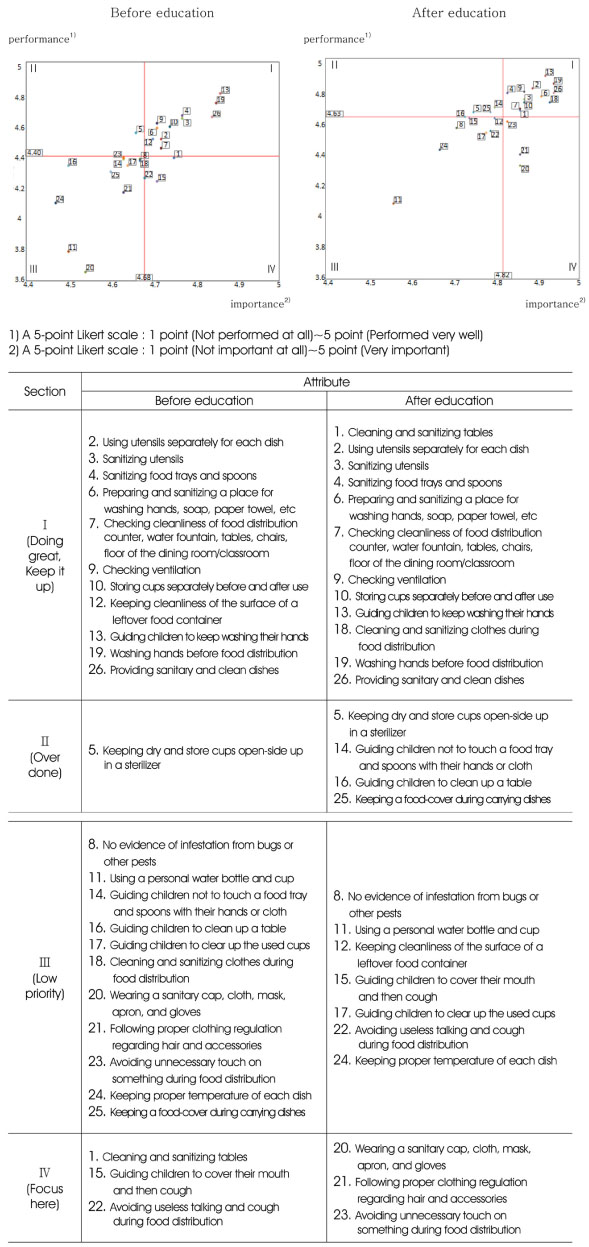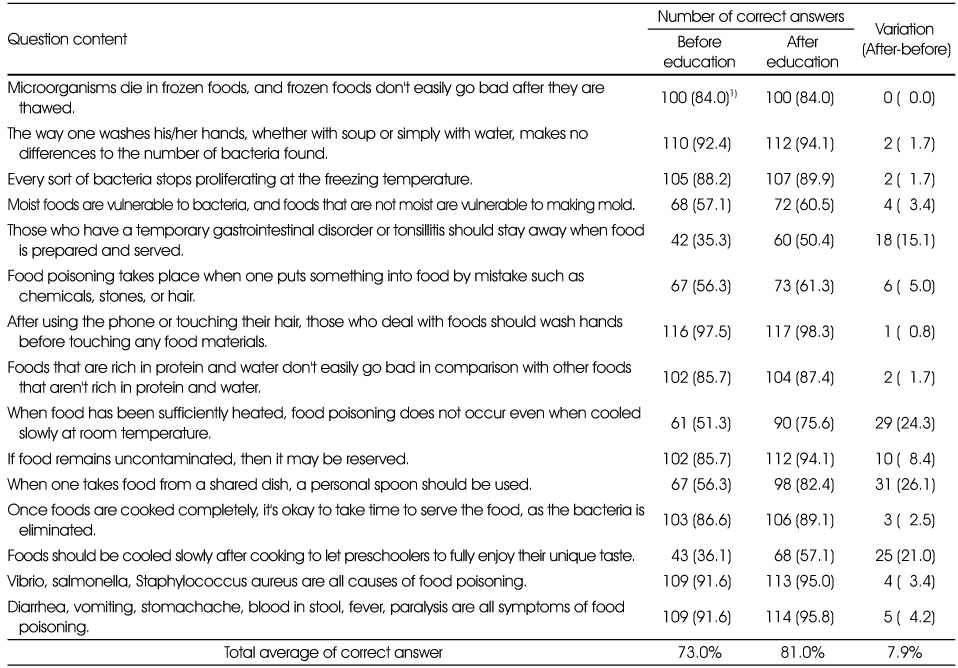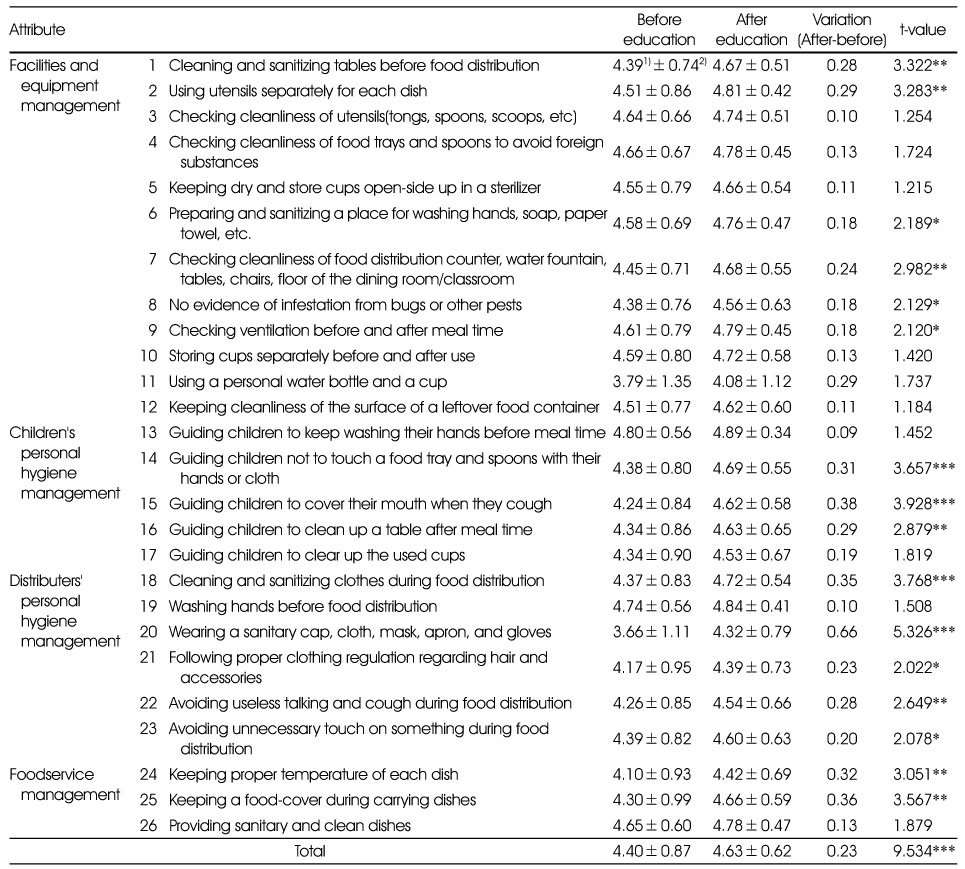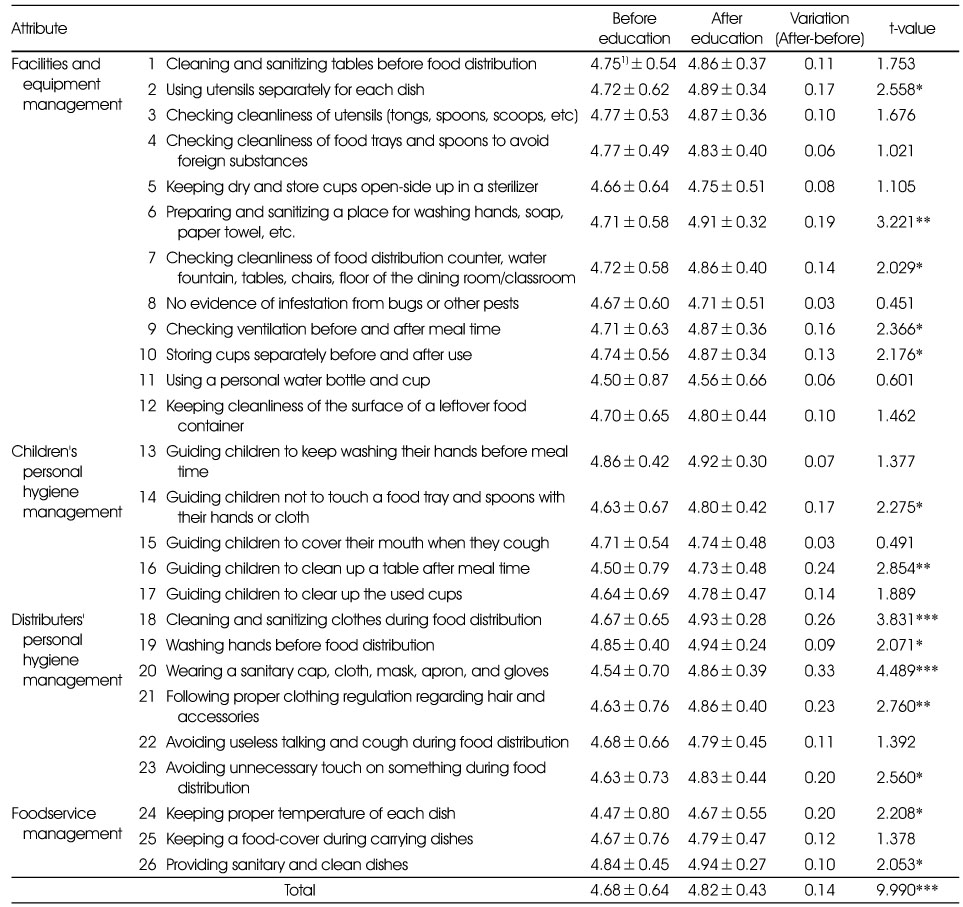References
1. Yeoh Y, Kwon S, Yoon J. Teachers' participation and mealtime instruction in the food service at the Kwanak-gu childcare centers: comparison between child-care teachers caring different age groups, children younger than three years and those three years or older. Korean J Community Nutr 2013;18(2):112–124.
2. Ministry of Health and Welfare. 2014 childcare statistics [Internet] Ministry of Health and Welfare; 2015. updated 2015 Apr 6. cited 2015 Sep 21. Available from:
http://stat.mw.go.kr/.
3. Korean Educational Statistics Service. Education statistical year book [Internet] Korean Educational Statistics Service; 2015. updated 2015 Aug 3. cited 2015 Sep 30. Available from:
http://kess.kedi.re.kr/.
4. Bae HJ, Lee HY, Ryu K. Field assessment of food safety management at preschool foodservice establishments. Korean J Food Cookery Sci 2009;25(3):283–296.
5. Ministry of Food and Drug Safety. Food poisoning statistics [Internet] Ministry of Food and Drug Safety; 2015. updated 2015 Jan 30. cited 2015 Sep 11. Available from:
https://www.foodsafetykorea.go.kr/.
6. Lee KA, Lee MY, Park I. A survey on the hand washing awareness and behavior in elementary schools serving food in a classroom in Busan. J Korean Diet Assoc 2009;15(3):220–231.
7. Park HS, Lee KM, Seol HR, Park KH, Ryu K. Evaluation of foodservice managers' perception on safety management in childcare centers and kindergartens. Korean J Community Nutr 2009;14(1):87–99.
8. Lee JY. A survey on hygienic perception of students about elementary school food service in Seoul [master's thesis] Kyunghee University; 2011.
9. Choi KS. A study on nutrition knowledge, dietary attitudes and nutrition education needs among child-care teachers. Korean J Community Nutr 2010;15(1):137–148.
10. Choi DM. 2015 center for children's foodservice management guide-line 1st revisionth ed. Cheongwon: Ministry of Food and Drug Safety; 2015. p. 3–9.
11. Center for Children's Foodservice Management. Center introduction [Internet] Ministry of Food and Drug Safety; 2015. updated 2011 Jun 24. cited 2015 Sep 30. Available from:
https://ccfsm.foodnara.go.kr/.
12. Kim J, Lee Y. The effect of a periodic visiting education program on food safety knowledge of cooks in children's foodservice facilities. J Korean Diet Assoc 2014;20(1):36–49.
13. Kim HY, Yang IS, Chae IS, Yi BS, Park MK, Kim HY. Effectiveness of center for child-care foodservice management for menu management and dietary variety. Korean J Community Nutr 2013;18(3):243–256.
14. Jung HA, Kim AN, Joo NM, Paik JE. Analyzing the importance and performance of sanitation management within childcare center foodservice facilities in Gyeongbuk province. J East Asian Soc Diet Life 2011;21(3):385–391.
15. Jang JY. Teacher awareness and needs on dietary education at child care centers and kindergartens located in Seoul [master's thesis] Graduate School of Education Kyunghee University; 2011.
16. Lee JE, Choi KS, Kwak TK. Assessment of kindergarten principals and teachers' performance degree of foodservice hygiene management and foodservice employees' hygiene knowledge. J Korean Diet Assoc 2012;18(4):308–325.
17. Choi NR. Survey on secondary school teachers' awareness for sanitation in school meal service(Focused on Daegu and GyeongBuk area) [master's thesis] Graduate School of Education Yeungnam University; 2010.
18. Seo S, Moon S, Choi J. Evaluation of hygienic status using ATP bioluminescence assay and food service workers' sanitation performance in elderly welfare facilities. J Korean Diet Assoc 2011;17(2):142–160.
19. Kim JB, Hur ES, Kang SH, Kim DH, Do YS, Park PH, et al. Prevalence of microbiological hazard on nursery school children's hands and effect of hand washing education. J Food Hyg Saf 2012;27(1):30–36.
20. Park SJ, Ha GS, Shim WB, Park MK, Chung DH. Environmental Microbial Assessment of Food Services at Elementary School in Western Gyeongnam Province. J Food Hyg Saf 2003;18(1):14–24.





